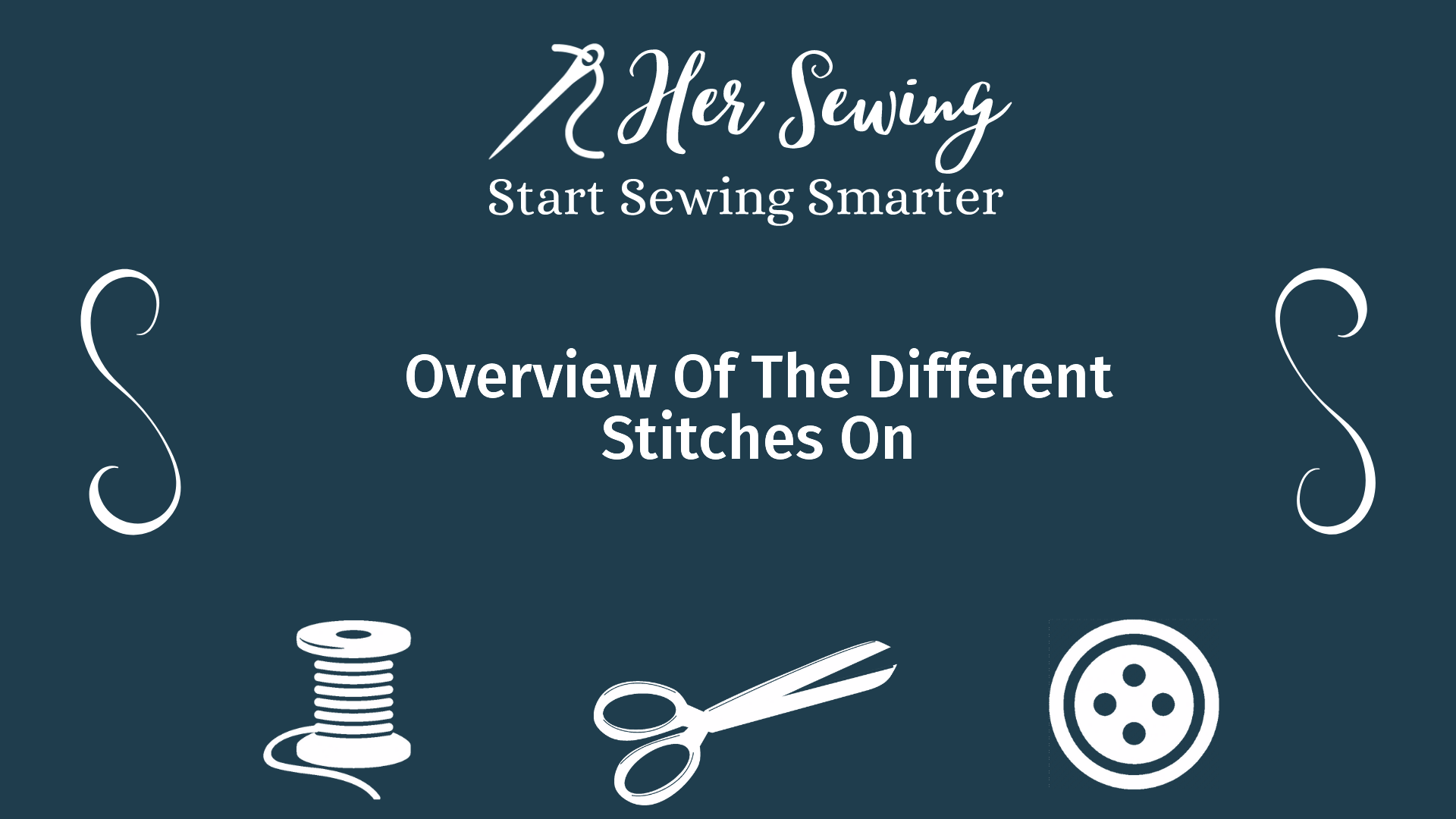Overview of the different stitches
Twitter
Facebook
Whatsapp
Pinterest
Comments
Modern sewing machines are real all-round talents. They support you in different areas and contribute to the fact that the sewing result is quite impressive. Especially important for this are the different stitches which can be adjusted on the sewing machine. Apart from classic straight and zigzag stitches, most machines have a sometimes large pool of different other stitches. These do not always have the sole purpose of sewing a fabric together, but are often also called decorative stitches. The most important stitch types are presented here.
The classic stitch types
In addition to the classic types of stitches, many sewing machines also have different types of decorative stitches that not only look good, but usually also perform a specific task. If you like to work with different types of decorative stitches such as
- the honeycomb or
- the bassoon trick
If you want to work with a sewing machine, you must pay attention to the stitch types of the sewing machine you have selected. A comparison is always worthwhile in this case.
Straight stitch
The classic straight stitch is always used when you want to sew one or two fabrics together. It is also used to topstitch fabrics.
Triple straight stitch
This is a reinforced form of the straight stitch. It is used when the seams need to be extra strong and durable. Also reinforced topstitching is possible with this stitch
basting stitch
The tacking stitch is actually a typical hand sewing stitch. It is used to sew fabrics together in a makeshift way. Many sewing machines are also able to perform this stitch. It can then be easily removed again with a seam separator.
Zigzag stitch
The zigzag stitch is a very versatile stitch that has different applications. These include:
Edge trimming
Strengthening of seams
Sewing of elastic seams
Fixing of tip inserts
It can be individually adjusted both in length and width. The narrower the zigzag stitch, the more elastic it is.
Triple zigzag stitch
The reinforced zigzag stitch is usually used as a decorative seam, for example for topstitching. It can also be used to finish hems nicely.
Caterpillar stitch
This stitch is primarily used for various eyelet embroideries. It looks like a pushed together zigzag stitch.
Three Step Zigzag Stitch
This is also a zigzag stitch, but it has very precise tasks:
Stuffing of tears
patch deployment
Attaching elastic bands
Stretch three step zigzag stitch
The stretch stitch has the same tasks as the simple three-step stitch. It can also be used for decorative stitches.
Overview of the most popular decorative stitches
Honeycomb stitch
An ornamental stitch that is used especially for elastic fabrics and hems. Due to the honeycomb arrangement, this stitch can be described as particularly flat.
Bassoon Stitch
This stitch is used when two different fabrics are sewn together – for example in patchwork work.
Witch stitch
The witch stitch is an extraordinarily elastic decorative stitch, which is also primarily used for elastic fabrics.
Blind stitch
This special zigzag stitch is used when seams and fabric edges are to be sewn around and decorated. As the name suggests, blind stitches are invisible, so to speak.
Advantages and disadvantages of the different stitch types
- some stitches are excellent for sewing over hems and fabric edges
- others rather to combine two substances
- with the wrong stitch the durability of the product can be affected
How do I set a stitch type?
The beauty of modern sewing machines is that you can switch between different types of stitches at will. In most cases you only have to adjust the corresponding wheel on the machine. Depending on which stitch you select, the wheel can also be used to set the width of the stitches.
Important: Each stitch type requires a different thread tension. It is important to keep this in mind if you want to avoid the thread tearing again and again. Accordingly, wild switching back and forth between the different types is not recommended (and in most cases is not necessary at all).
Dealing with different stitch types can be extremely exciting and open up completely new possibilities. So why not try out a piece of fabric and find out what your sewing machine has to offer. Your machine will certainly do more than just straight and zigzag stitches.
You may also be interested in the following topics:






![Foot controller FC31091(MODEL P) [Japan Import]](https://m.media-amazon.com/images/I/417XdZMy8HL._SL160_.jpg)